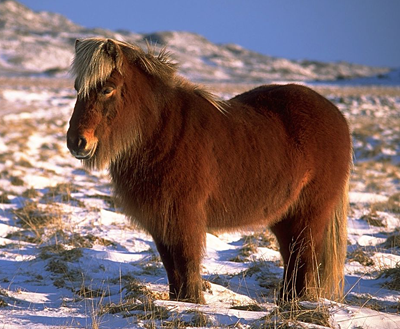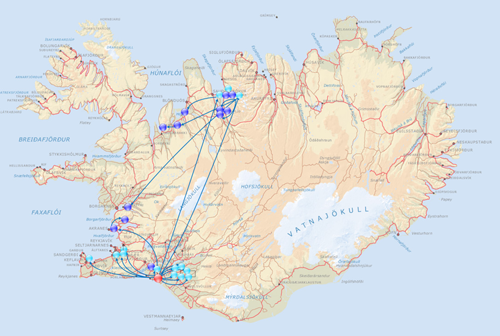Mystery epidemic that crossed species in Iceland is solved

The cause of an epidemic of respiratory disease which infected Iceland’s native horse population, as well as pets and humans, has been identified by scientists from the Wellcome Trust Sanger Institute and their collaborators at the Animal Health Trust (AHT) and Icelandic research institutions. The results are published in mBio.
Iceland suffered a nationwide epidemic of a mysterious respiratory disease in 2010. Affecting a population of 77,000 horses, the disease spread rapidly and caused significant economic cost to the country. Iceland is free of all major equine infectious diseases thanks to the ban on importing horses into the country in 1882. Enjoying a relatively disease-free environment for the last 1,000 years, the Icelandic horses are particularly susceptible to any new bacteria or virus that crosses the border, and so strict biosecurity regulations are in place to help protect them.

Unfortunately, a mystery bug did manage to enter the country and in 2010 it wasted no time in taking advantage of the vulnerable horse population, spreading across the country within weeks. Not only did the disease affect horses, but dogs, cats and humans also fell ill. The disease was found in an Icelandic woman, who contracted septicaemia and suffered a miscarriage. Despite looking for a wide range of disease-causing bugs, the only potential cause was identified as the bacteria Streptococcus zooepidemicus, which was recovered from coughing horses and rare fatal cases of infection. However, this bug is also often found in healthy horses.
The Animal Health Trust and the Wellcome Trust Sanger Institute were brought in to investigate bacteria recovered from horses, humans, dogs and cats throughout Iceland.
“To identify the culprit, we sequenced the DNA from 257 samples of bacteria in diseased animals. This showed that one specific strain of Streptococcus zooepidemicus, called ST209, was likely to be the guilty bacteria, and we also found this strain in a human case of blood poisoning. This study highlights how DNA sequencing can be used to identify the cause of an epidemic infection.”
Dr Simon Harrisfrom the Wellcome Trust Sanger Institute
Dr. Sigríður Björnsdóttir of the Icelandic Food and Veterinary Authority (MAST) Used information from owners and vets to build an epidemiological network. This enabled her to retrace the journey of the bug back to an equine rehabilitation centre where horses exercised in a communal water treadmill. The water is thought to have provided the perfect breeding ground for the disease; allowing the bug to be easily transmitted to the next unfortunate animal if water was splashed up and ingested. Horses would complete their rehabilitation and return home, taking the infection with them.
This particular strain of S. zooepidemicus has also been recovered from a coughing horse in Sweden and an abdominal abscess in a Finnish horse trainer.
“There are a couple of theories as to how the disease entered Iceland in the first place. The offending pathogen is able to survive outside a horse for a week or so, which means the import of contaminated equipment or clothing could have transmitted the disease to horses in Iceland. However, this particular strain may have even travelled to Iceland in a person, before transferring back to a horse and sweeping nationwide.
“This investigation not only highlights the importance of biosecurity in protecting and preventing spread amongst animals, but to humans too. This particular strain was able to cross species boundaries, jumping from a coughing horse to a person. We are pleased to have helped uncover the identity of this mystery disease. We hope that raising awareness of the cause of this epidemic will encourage people to improve disease control precautions worldwide.”
Dr Andrew Waller, Head of Bacteriology at the Animal Health Trust
More information
Publications:
Selected websites
The Animal Health Trust (AHT)
The Animal Health Trust (AHT) is the UK’s leading veterinary and scientific research charity, dedicated to the health and wellbeing of dogs, cats and horses. It aims to improve the health and welfare of horses, dogs and cats through research, but also provides specialist referral services and continuous education to vets. Throughout 2017, the AHT is celebrating its 75th Anniversary – that’s 75 years of leading science and care for animals.
The Wellcome Trust Sanger Institute
The Wellcome Trust Sanger Institute is one of the world’s leading genome centres. Through its ability to conduct research at scale, it is able to engage in bold and long-term exploratory projects that are designed to influence and empower medical science globally. Institute research findings, generated through its own research programmes and through its leading role in international consortia, are being used to develop new diagnostics and treatments for human disease.


